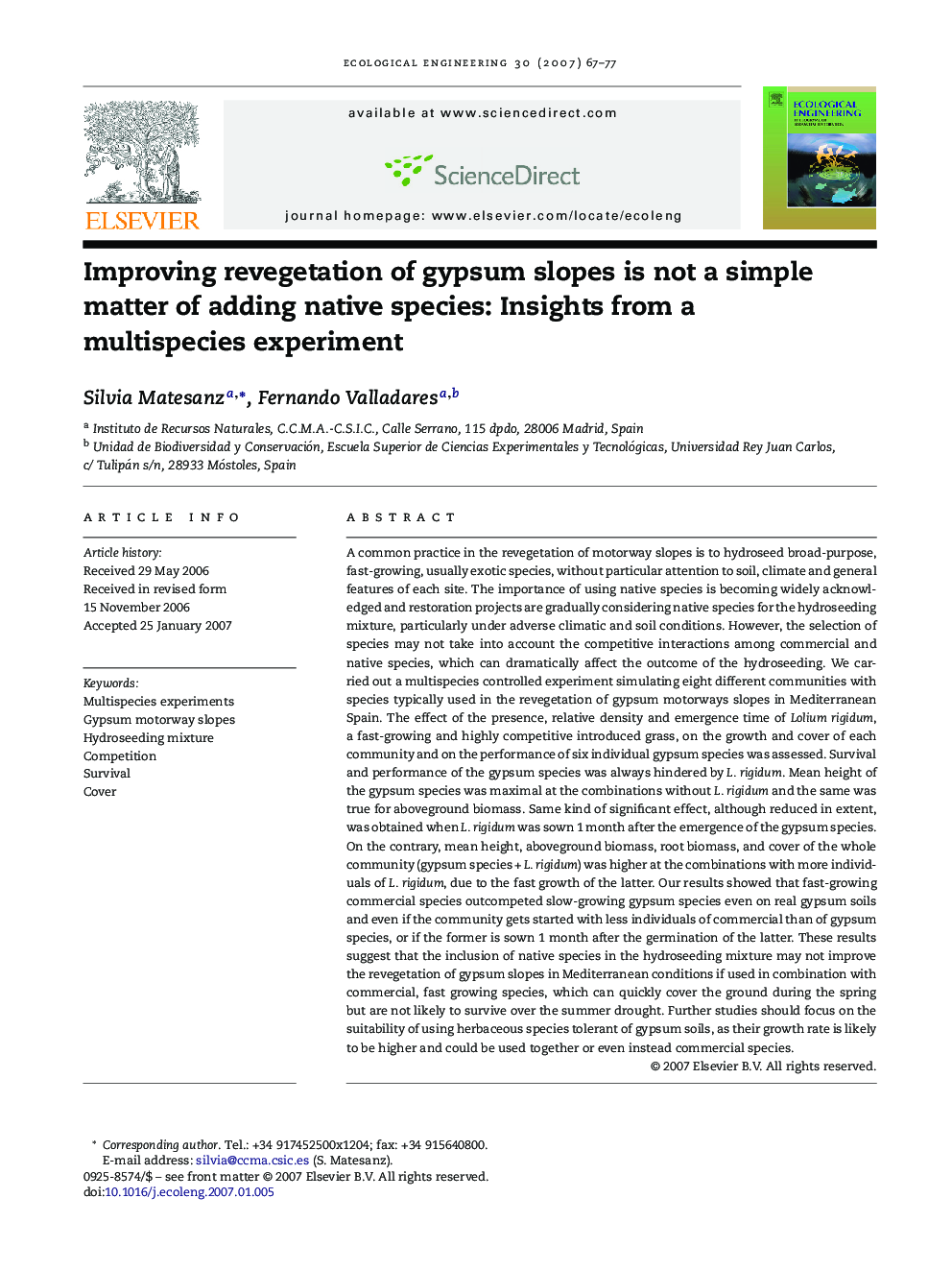| کد مقاله | کد نشریه | سال انتشار | مقاله انگلیسی | نسخه تمام متن |
|---|---|---|---|---|
| 4391114 | 1305212 | 2007 | 11 صفحه PDF | دانلود رایگان |

A common practice in the revegetation of motorway slopes is to hydroseed broad-purpose, fast-growing, usually exotic species, without particular attention to soil, climate and general features of each site. The importance of using native species is becoming widely acknowledged and restoration projects are gradually considering native species for the hydroseeding mixture, particularly under adverse climatic and soil conditions. However, the selection of species may not take into account the competitive interactions among commercial and native species, which can dramatically affect the outcome of the hydroseeding. We carried out a multispecies controlled experiment simulating eight different communities with species typically used in the revegetation of gypsum motorways slopes in Mediterranean Spain. The effect of the presence, relative density and emergence time of Lolium rigidum, a fast-growing and highly competitive introduced grass, on the growth and cover of each community and on the performance of six individual gypsum species was assessed. Survival and performance of the gypsum species was always hindered by L. rigidum. Mean height of the gypsum species was maximal at the combinations without L. rigidum and the same was true for aboveground biomass. Same kind of significant effect, although reduced in extent, was obtained when L. rigidum was sown 1 month after the emergence of the gypsum species. On the contrary, mean height, aboveground biomass, root biomass, and cover of the whole community (gypsum species + L. rigidum) was higher at the combinations with more individuals of L. rigidum, due to the fast growth of the latter. Our results showed that fast-growing commercial species outcompeted slow-growing gypsum species even on real gypsum soils and even if the community gets started with less individuals of commercial than of gypsum species, or if the former is sown 1 month after the germination of the latter. These results suggest that the inclusion of native species in the hydroseeding mixture may not improve the revegetation of gypsum slopes in Mediterranean conditions if used in combination with commercial, fast growing species, which can quickly cover the ground during the spring but are not likely to survive over the summer drought. Further studies should focus on the suitability of using herbaceous species tolerant of gypsum soils, as their growth rate is likely to be higher and could be used together or even instead commercial species.
Journal: Ecological Engineering - Volume 30, Issue 1, 1 May 2007, Pages 67–77